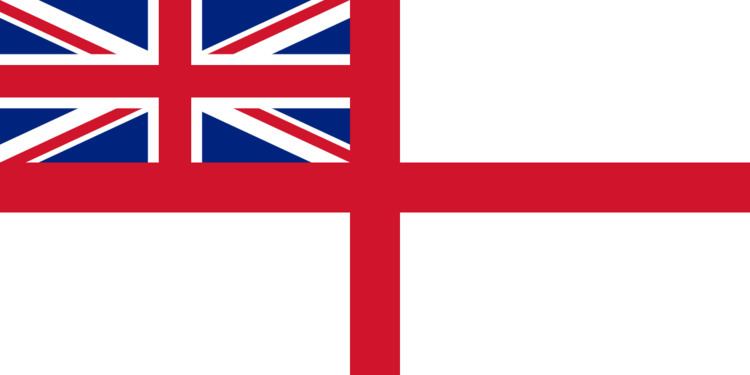The Second Sea Lord (2SL), is one of the most senior admirals of the British Royal Navy, responsible for personnel and naval shore establishments.
In 1805, for the first time, specific functions were assigned to each of the 'Naval' Lords, who were described as 'Professional' Lords, leaving to the 'Civil' Lords the routine business of signing documents. The Second Naval Lord was the second most senior Naval Lord on the Board of Admiralty and as Chief of Naval Personnel was responsible for handling all personnel matters for the Royal Navy.
The posts of Second Sea Lord and the Commander-in-Chief Naval Home Command (CINCNAVHOME) were amalgamated in 1994 following the rationalisation of the British Armed Forces following the end of the Cold War. (The post of Commander-in-Chief, Naval Home Command had been created on 1 July 1969 as a result of the merger of the posts of Commander-in-Chief, Portsmouth and Commander-in-Chief, Plymouth.)
2SL is based in Portsmouth in a combined headquarters with the Fleet Commander on Whale Island. Until October 2012 he flew his flag from HMS Victory, the world's oldest commissioned warship, which is preserved in dry dock in Portsmouth. The right to use HMS Victory as a flagship came from his position as CINCNAVHOME, who in turn acquired it from the Commander-in-Chief, Portsmouth. Since October 2012, distinct Commander-in-Chief posts have been discontinued and full command responsibility vested in the First Sea Lord, who now flies his flag from Victory.
In 2016 the post was retitled Second Sea Lord & Deputy Chief of Naval Staff and defined as "responsible for the delivery of the Naval Service’s current and future personnel, equipment and infrastructure".
Second Naval Lords include:
Rear Admiral George Dundas, 1830–1834
Vice-Admiral Sir William Parker, 1834
Vice-Admiral Sir John Beresford, 1835–1841
Vice-Admiral Sir William Parker, 1835–1841
Rear Admiral Sir Edward Troubridge, 1841
Vice-Admiral Sir William Gage, 1841–1846
Vice-Admiral Sir James Dundas, 1846–1847
Vice-Admiral Sir Henry Prescott, 1847
Vice-Admiral Sir Maurice Berkeley, 1847–1852
Vice-Admiral Sir Houston Stewart, 1852
Vice-Admiral Sir Phipps Hornby, 1852–1853
Vice-Admiral Sir Maurice Berkeley, 1853–1854
Vice-Admiral Sir Richard Dundas, 1854–1855
Vice-Admiral Henry Eden, 1855–1857
Vice-Admiral Sir Richard Dundas, 1857
Vice-Admiral Henry Eden, 1857–1858
Vice-Admiral Sir Richard Dundas, 1858–1859
Rear Admiral Frederick Pelham, 1859–1861
Vice Admiral Sir Charles Eden, 1861–1866
Vice-Admiral Sir Sydney Dacres, 1866–1868
Vacant, 1868–1872
Vice Admiral Sir John Tarleton, 1872–1874
Vice-Admiral Sir Geoffrey Hornby, 1874–1877
Vice-Admiral Sir Arthur Hood 1877–1879
Admiral The Earl of Clanwilliam, 1879–1880
Admiral Lord John Hay, 1880–1883
Admiral Lord Alcester, 1883–1885
Admiral Sir Anthony Hoskins, 1885–1888
Vice-Admiral Sir Vesey Hamilton, 1888–1889
Admiral Sir Henry Fairfax, 1889–1892
Admiral Sir Frederick Richards, 1892–1893
Admiral Lord Walter Kerr, 1893–1895
Vice-Admiral Sir Frederick Bedford, 1895–1899
Admiral Lord Walter Kerr, 1899
Vice-Admiral Archibald Douglas, 1899–1902
Admiral Sir John Fisher, 1902–1903
Second Sea Lords include:
Vice-Admiral Sir Charles Drury, 1903–1907
Admiral Sir William May, 1907–1909
Vice-Admiral Sir Francis Bridgeman, 1909–1911
Vice-Admiral Sir George Egerton, 1911
Vice-Admiral Prince Louis of Battenberg, 1911–1912
Vice-Admiral Sir John Jellicoe, 1912–1914
Vice-Admiral Sir Frederick Hamilton, 1914–1916
Vice-Admiral Sir Somerset Gough-Calthorpe, 1916
Admiral Sir Cecil Burney, 1916–1917
Admiral Sir Rosslyn Wemyss, 1917
Vice-Admiral Sir Herbert Heath, 1917–1919
Admiral Sir Montague Browning, 1919–1920
Admiral Sir Henry Oliver, 1920–1924
Vice-Admiral Sir Michael Culme-Seymour, 1924–1925
Vice-Admiral Sir Hubert Brand, 1925–1927
Admiral Sir Michael Hodges, 1927–1930
Admiral Sir Cyril Fuller, 1930–1932
Admiral Sir Dudley Pound, 1932–1935
Admiral Sir Martin Dunbar-Nasmith, 1935–1938
Admiral Sir Charles Little, 1938–1941
Admiral Sir William Whitworth, 1941–1944
Admiral Sir Algernon Willis, 1944–1946
Admiral Sir Arthur Power, 1946–1948
Admiral Sir Cecil Harcourt, 1948–1950
Admiral Sir Alexander Madden, 1950–1953
Admiral Sir Guy Russell, 1953–1955
Admiral Sir Charles Lambe, 1955–1957
Vice-Admiral Sir Deric Holland-Martin, 1957–1959
Admiral Sir St John Tyrwhitt, 1959–1961
Admiral Sir Royston Wright, 1961–1965
Admiral Sir Desmond Dreyer, 1965–1967
Admiral Sir Peter Hill-Norton, 1967
Admiral Sir Frank Twiss, 1967–1970
Vice-Admiral Sir Andrew Lewis, 1970–1971
Admiral Sir Derek Empson, 1971–1974
Admiral Sir David Williams, 1974–1977
Admiral Sir Gordon Tait, 1977–1979
Admiral Sir Desmond Cassidi, 1979–1982
Admiral Sir Simon Cassels, 1982–1986
Admiral Sir Richard Fitch, 1986–1988
Admiral Sir Brian Brown, 1988–1991
Admiral Sir Michael Livesay, 1991–1992
Admiral Sir Michael Layard, 1992–1995
Second Sea Lords and Commanders-in-Chief Naval Home Command 1995-2012
Second Sea Lords and Commanders-in-Chief include:
See: Deputy Chief of the Naval Staff

